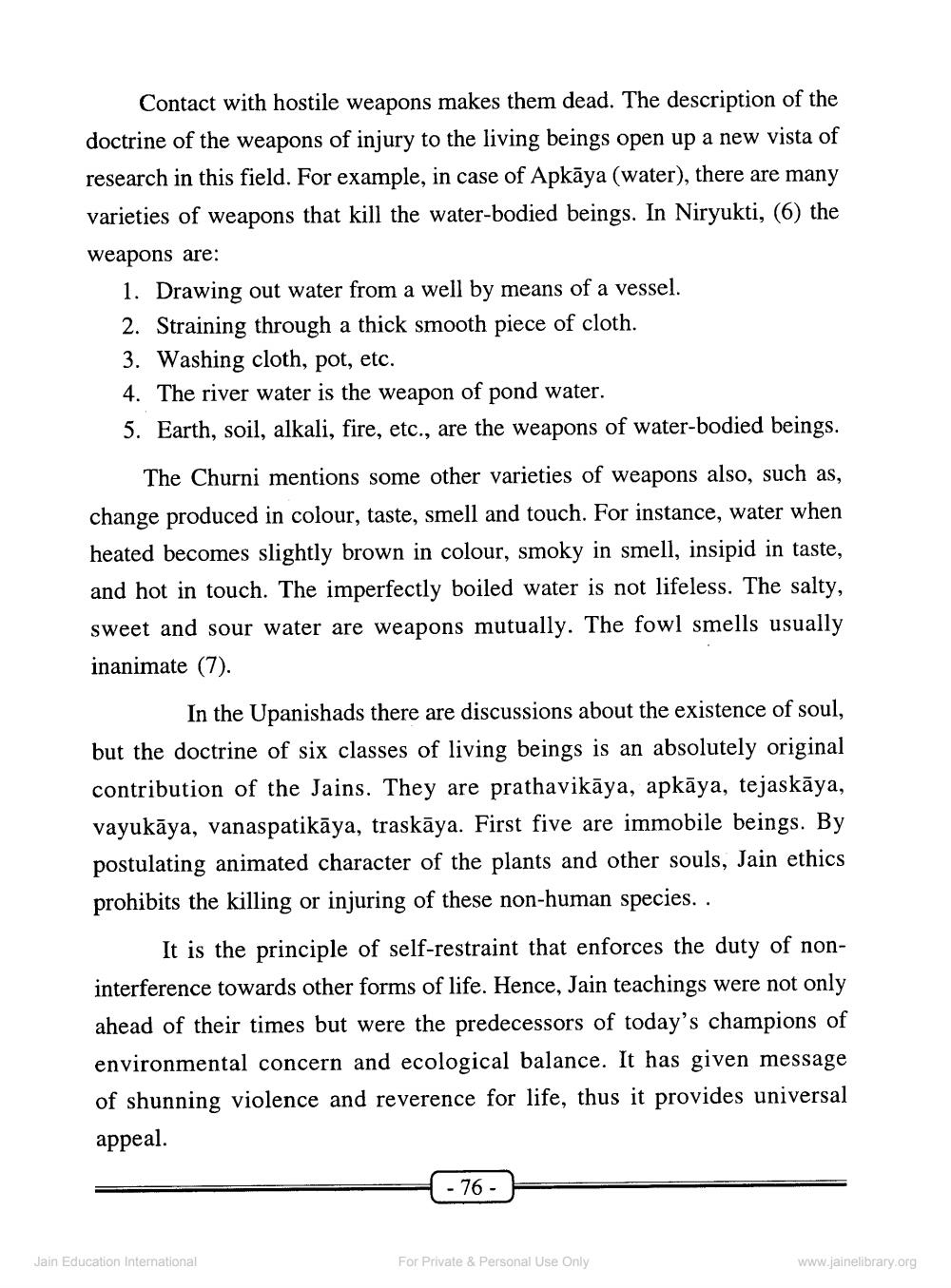________________
Contact with hostile weapons makes them dead. The description of the doctrine of the weapons of injury to the living beings open up a new vista of research in this field. For example, in case of Apkāya (water), there are many varieties of weapons that kill the water-bodied beings. In Niryukti, (6) the weapons are:
1. Drawing out water from a well by means of a vessel. 2. Straining through a thick smooth piece of cloth. 3. Washing cloth, pot, etc. 4. The river water is the weapon of pond water. 5. Earth, soil, alkali, fire, etc., are the weapons of water-bodied beings.
The Churni mentions some other varieties of weapons also, such as, change produced in colour, taste, smell and touch. For instance, water when heated becomes slightly brown in colour, smoky in smell, insipid in taste, and hot in touch. The imperfectly boiled water is not lifeless. The salty, sweet and sour water are weapons mutually. The fowl smells usually inanimate (7).
In the Upanishads there are discussions about the existence of soul, but the doctrine of six classes of living beings is an absolutely original contribution of the Jains. They are prathavikāya, apkāya, tejaskāya, vayukāya, vanaspatikāya, traskāya. First five are immobile beings. By postulating animated character of the plants and other souls, Jain ethics prohibits the killing or injuring of these non-human species. .
It is the principle of self-restraint that enforces the duty of noninterference towards other forms of life. Hence, Jain teachings were not only ahead of their times but were the predecessors of today's champions of environmental concern and ecological balance. It has given message of shunning violence and reverence for life, thus it provides universal appeal.
- 76 -
Jain Education International
For Private & Personal Use Only
www.jainelibrary.org




